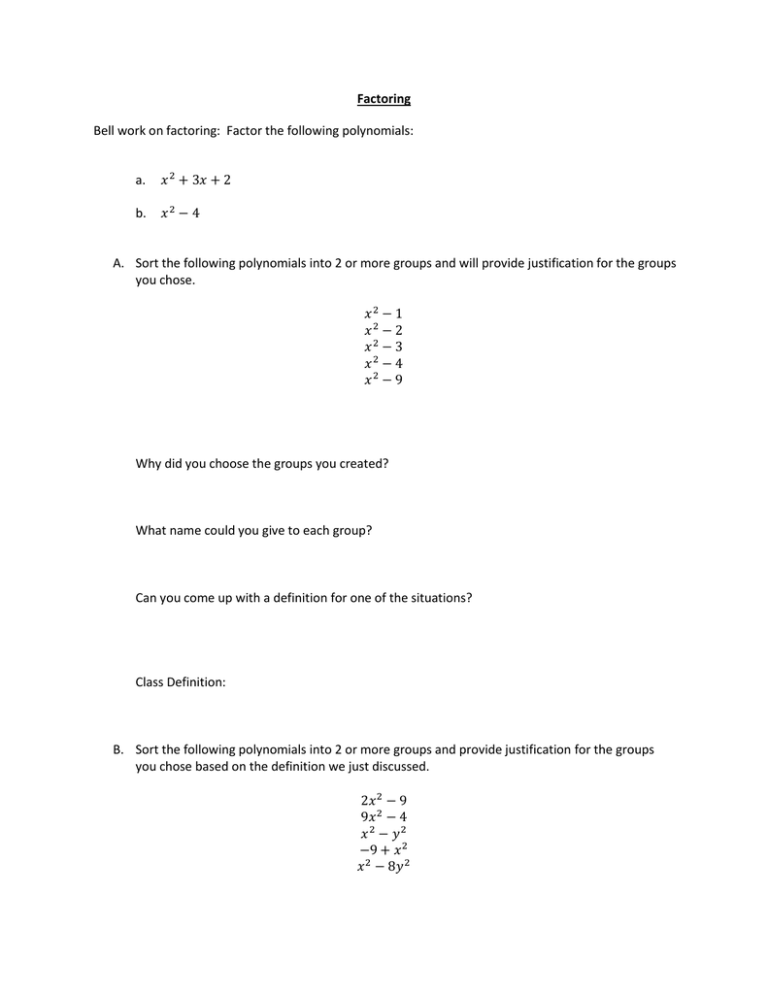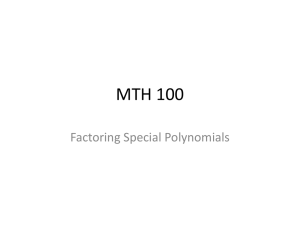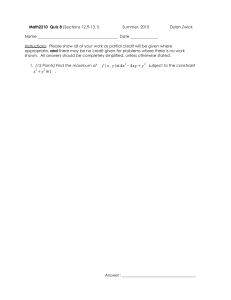Factoring Perfect Squares
advertisement

Factoring Bell work on factoring: Factor the following polynomials: a. 𝑥 2 + 3𝑥 + 2 b. 𝑥2 − 4 A. Sort the following polynomials into 2 or more groups and will provide justification for the groups you chose. 𝑥2 − 1 𝑥2 − 2 𝑥2 − 3 𝑥2 − 4 𝑥2 − 9 Why did you choose the groups you created? What name could you give to each group? Can you come up with a definition for one of the situations? Class Definition: B. Sort the following polynomials into 2 or more groups and provide justification for the groups you chose based on the definition we just discussed. 2𝑥 2 − 9 9𝑥 2 − 4 𝑥2 − 𝑦2 −9 + 𝑥 2 𝑥 2 − 8𝑦 2 Why did you choose the groups you created? Do all of the equations in the difference of squares group meet the definition? C. Are these two polynomials the difference of squares? Explain using the definition we came up with to defend your reasoning. a. 2𝑥 2 − 8 b. 𝑥 4 − 𝑦 4 How do these fit in our difference of squares definition? D. Complete the following tasks: 1. Create your own difference of squares polynomial that has one variable and a coefficient other than one. 2. a. Create your own difference of squares polynomial that has two variables and a coefficient other than one. b. Create your own difference of squares polynomial that has two variables whose exponents are both greater than 2. E. Find the area of the rectangle below. x 2 x 3 What is the total length of each side of the rectangle? Explain how you found your area. F. Given the area of a rectangle is 𝑥 2 + 3𝑥 + 2, can you fill in the dimensions on the following shape. ? ? ? ? What are the lengths of each side? G. How can you represent 𝑥 2 − 9 ? ? ? ? ? What does the final area look like? Draw the new picture. H. What do you get when you multiply (𝑥 + 6)(𝑥 − 6)? How many terms to you get? How is this similar to a trinomial? How is this different than a trinomial? How are the original product and your result related? Can you represent this area in another way? Show your work. Can you think of another example of factors that produce similar results to the first example? Definition: Conjugate Pairs I. Factor all of the problems in Part A that are a difference of squares. J. Factor all of the problems in Part B that are difference of squares. Extension: Step 1: Pick any two consecutive numbers. Step 2: Square each and find the difference. Step 3: Add the two original numbers. Step 4: Explain why steps 2 and 3 give the same result.



